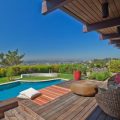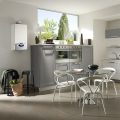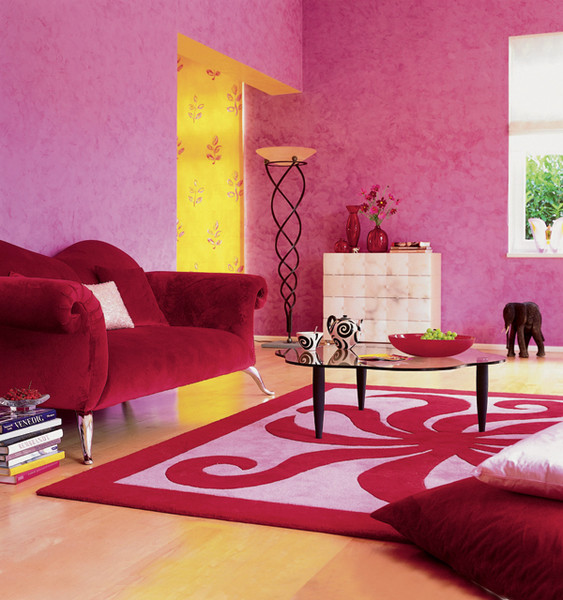 Types of decorative plaster Unlike conventionalplasters, which are intended exclusively for leveling the surface, and the structural materials of the same name, which are used to create relief, our heroine is used to obtain a certain texture or decorative effect. Interestingly, many, if not most, do not see the difference between completely dissimilar decorative materials, calling them Venetian plasters. However, stucco veneziano is not so much a proper name for the coating as a method of applying it, which allows you to give the most trivial surface the appearance of natural marble. That is why many manufacturers try to use this term as rarely as possible, preferring to talk about "Venetian images". This expression characterizes the class of materials being described much more accurately, and is less contrary to the truth.
Types of decorative plaster Unlike conventionalplasters, which are intended exclusively for leveling the surface, and the structural materials of the same name, which are used to create relief, our heroine is used to obtain a certain texture or decorative effect. Interestingly, many, if not most, do not see the difference between completely dissimilar decorative materials, calling them Venetian plasters. However, stucco veneziano is not so much a proper name for the coating as a method of applying it, which allows you to give the most trivial surface the appearance of natural marble. That is why many manufacturers try to use this term as rarely as possible, preferring to talk about "Venetian images". This expression characterizes the class of materials being described much more accurately, and is less contrary to the truth.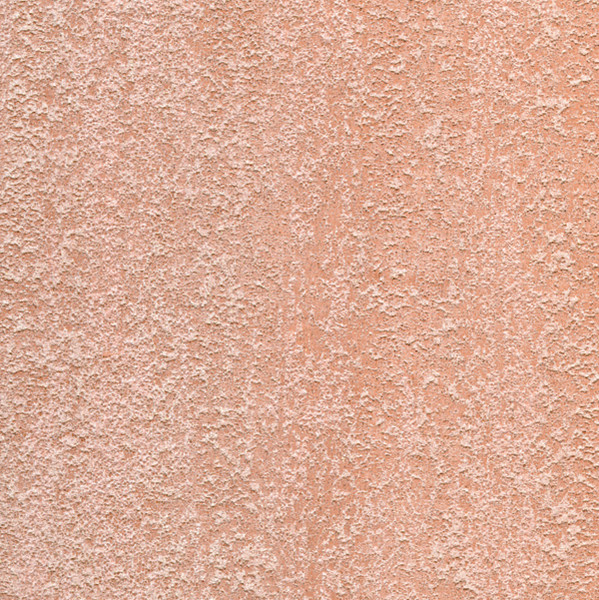
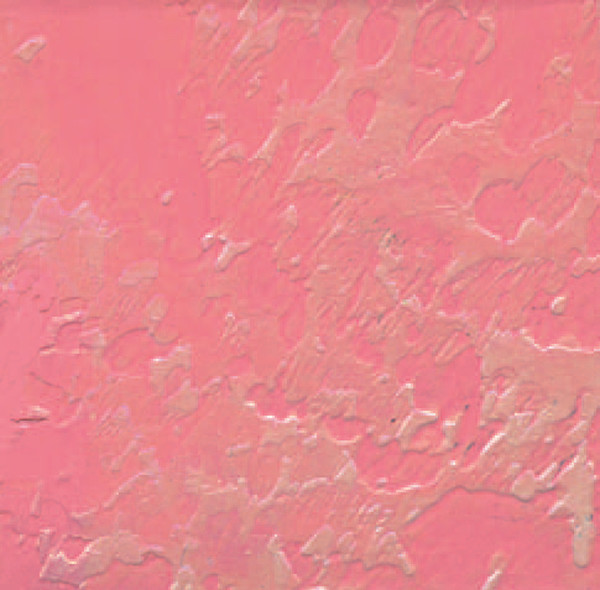
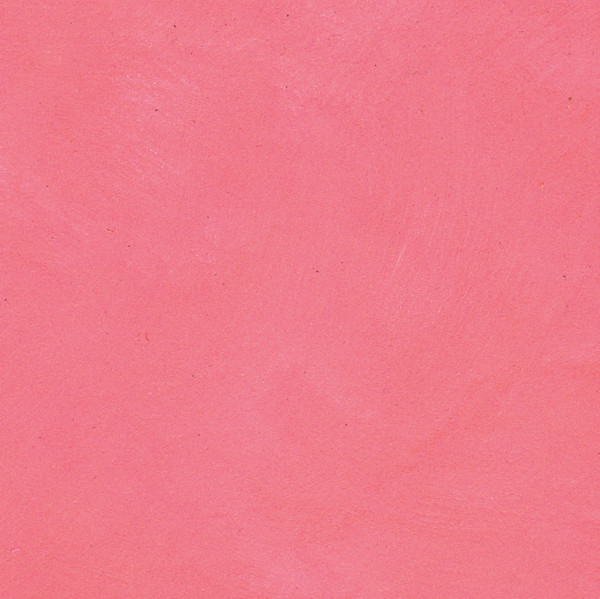

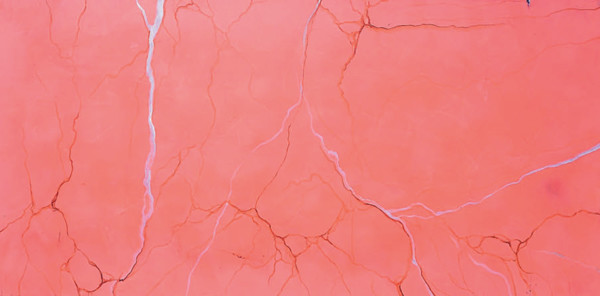
- Photo 1. Decorative coating Travertine (Armourcoat), color L 615 W 3494. From 1080 rub./m2.
- Photo 2. Decorative coating Avila (IrisDeco), color AD134 (4 ml); acrylic coating Velato (IrisDeco), colors AD505 and AD 504. From 365 rub./m2.
- Photo 3. Decorative coating "Azure Breeze" (MaxMaster), tinting according to the NCS catalogue in colour S 1060 R30B. From 268 rub./m2.
- Photo 4. Decorative coating Raffaello Decor Stucco (Oikos), color R155. From 497 rub./m².
- Photo 5. Decorative coating "Marblecoat" (Terraco), pink. From 80 rub./m.
Here's the thing.It is believed that the original recipe for recreating natural marble using a material based on stone dust and lime was lost many centuries ago, and all existing compositions are more or less successful attempts to restore the lost knowledge, so to speak, reflections on the topic, fantasies, whims, fancies, images. Since everyone has their own perception of reality and historical heritage, the images will most likely be different. This, by the way, explains such a wide range of decorative materials. After all, if we reason objectively, then in addition to imitating marble, they also include those that reproduce the texture of various fabrics, wood, leather, paper, in other words, almost any natural surface, and even multi-color paints.
Dive into the subject
Master's toolsTraditional tool forapplication of decorative plaster under natural stone - a stainless steel spatula. But to simplify the work process, a special trowel is often used. In addition, the arsenal of craftsmen includes special tampons and brushes, sea sponges, graters, rollers with different pile heights, plastic spatulas, spray guns, airbrushes. In special cases, say, at the discretion of the artist, even an ordinary hairbrush or an old painting glove can be used. Using the same composition, but different bases and tools, craftsmen achieve dissimilar and sometimes completely unexpected effects. Not only production specialists have their own opinion about "Venetian images", thinking over or improving the formulation of the compositions. Any company representing the interests of Western manufacturers or trading in materials of its own manufacture has full-time technologists. The latter know the features of each material perfectly, and therefore constantly replenish the number of existing sample samples of reference samples with coating application options. It is these, and not banks, that are offered to the customer. It happens that samples are made specifically for a project, focusing on a verbal description or photograph. But such cases are rare. And without original "AB" canvases, The assets of companies include about several tens of thousands and even hundreds of thousands of standards. Even with such a wide range of products, it is extremely difficult to choose. Therefore, some companies work with the customer according to the scheme of "step-by-step familiarization with the assortment". Usually, at the time of the first visit to the company's office, the client already has at least a vague idea of how the decorative coating should look. In any case, if not the texture, then the color guidelines are known exactly. The company manager has a certain selection made up of the most popular shades and textures, which is offered to the client. The meeting can end successfully with the purchase of the required composition or the transition to the second stage, at which the customer will be shown a wider color palette. The third level is an expanded offer of textures. Further actions develop according to a similar algorithm, up to the sixth stage of making an original sample. But, as we have already said, it rarely comes to this. Usually even the most demanding customer finds what he is looking for, if not at the first, then at the third stage.
Components
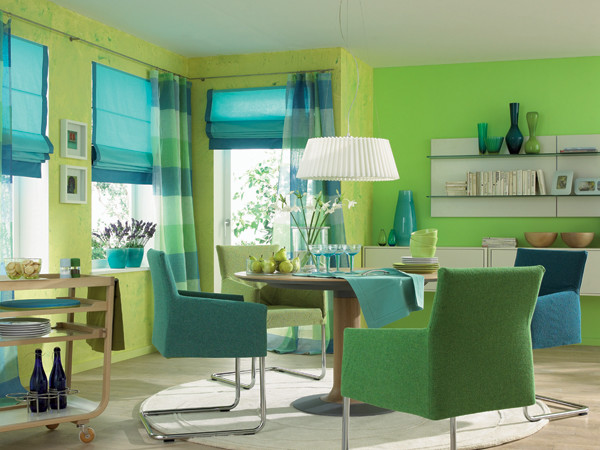 Depending on the manufacturer, they are identicalDepending on the effect they create, the materials have different names. For example, "marble" is obtained by professionally applying the following compositions: Castello (Corev, USA), Opus Stucco (Fractalis brand, Italy), Marmorino Naturale (Oikos, Italy), "Marblecoat" (Terraco, Sweden), Rococo (Valpaint, Italy), Palladio (IrisDeco, Russia), Pallais (MaxMaster brand, Russia). Coating under "crushed silk" or "velvet" is formed by means of materials Spatulata (Armourcoat, Great Britain), Etno (Fractalis), Ottocento Antico Velluto (Oikos), Sabula (Valpaint), Alba (IrisDeco), Gaufre (MaxMaster). However, upon closer acquaintance - after application and short-term use - it may turn out that the difference was not only in the created effect, name and country of manufacture. Just like paints and varnishes, decorative coatings are made according to different recipes and have different compositions. According to these features, they can be divided into three groups.
Depending on the manufacturer, they are identicalDepending on the effect they create, the materials have different names. For example, "marble" is obtained by professionally applying the following compositions: Castello (Corev, USA), Opus Stucco (Fractalis brand, Italy), Marmorino Naturale (Oikos, Italy), "Marblecoat" (Terraco, Sweden), Rococo (Valpaint, Italy), Palladio (IrisDeco, Russia), Pallais (MaxMaster brand, Russia). Coating under "crushed silk" or "velvet" is formed by means of materials Spatulata (Armourcoat, Great Britain), Etno (Fractalis), Ottocento Antico Velluto (Oikos), Sabula (Valpaint), Alba (IrisDeco), Gaufre (MaxMaster). However, upon closer acquaintance - after application and short-term use - it may turn out that the difference was not only in the created effect, name and country of manufacture. Just like paints and varnishes, decorative coatings are made according to different recipes and have different compositions. According to these features, they can be divided into three groups.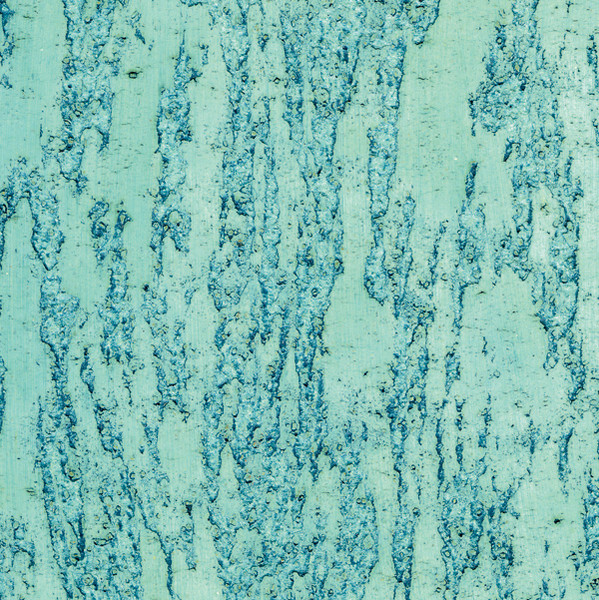
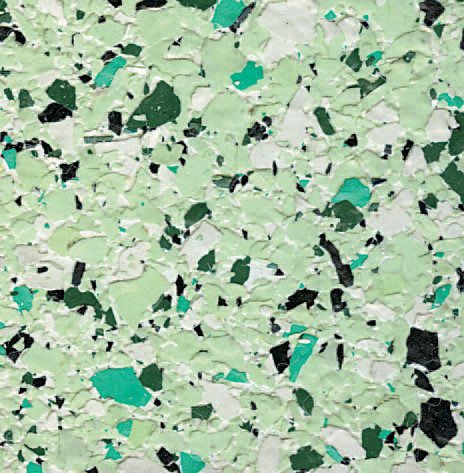
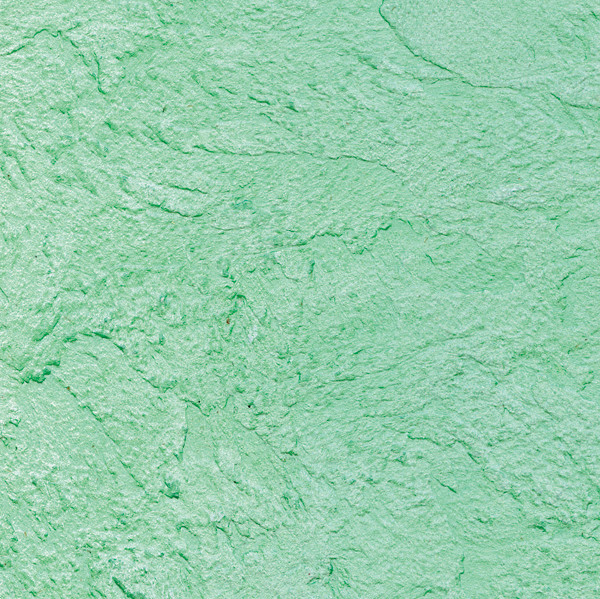
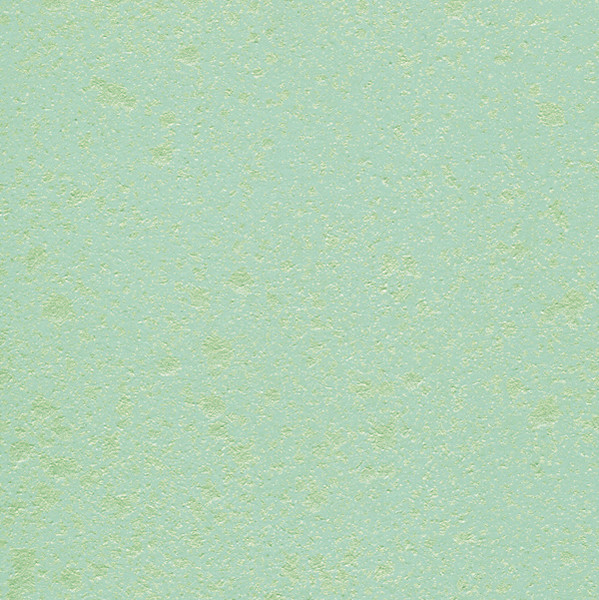
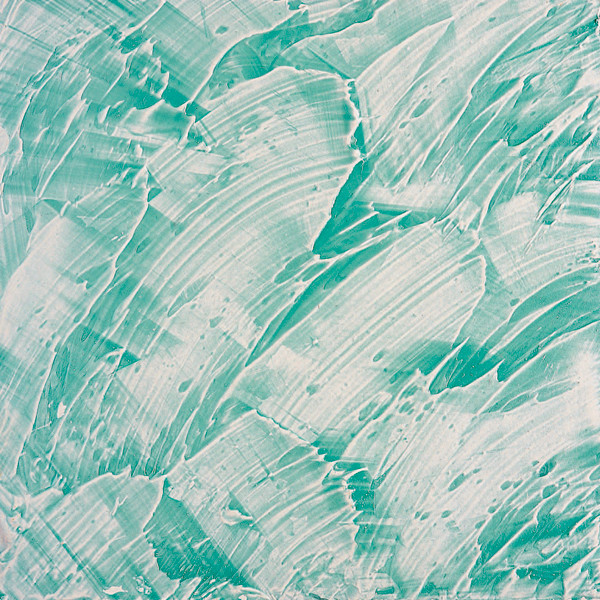
- Photo 1. Decorative coating Dragged (Armourcoat), color L 8033 W 3338. From 1080 rub./m².
- Photo 2. Decorative coating Grava («IrisDeco»), color 3018. From 231 rub./².
- Photo 3. Decorative coating "Fresco" (MaxMaster), tinting according to the "MaxDecor" catalogue in colour I 057. From 350 rub./m2.
- Photo 4. Decorative paint Multidecor (Oikos), color ES1150. From 115 rub./m².
- Photo 5. Relief coating "Henditex" (Terraco); silk paint "Terratop" (Terraco), tinting according to the Terraco catalogue in color 049-5. From 112 rubles/m2.
First – Absolute « synthetics »на основе смол. Ее плюсы – крайне низкая цена (от 60 руб./м²), высокая скорость работы (промежуток между нанесением слоев составляет всего четверть часа) и отсутствие необходимости в обработке защитным составом. Считается, что для декорирования жилых помещений «синтетика» подходит плохо, поскольку ее паропроницаемость близка к нулевой. Кроме того, покрытие выглядит не слишком естественно. Тем не менее поклонники у материала с синтетическим блеском есть. Оптимальное соотношение цены и качества у второй группы – полусинтетических составов, приготовленных на базе минеральных веществ (мраморной пыли, кварца, извести) и акриловых пластификаторов. Чем больше процентное содержание последних, тем быстрее высыхает покрытие – перерыв во времени между нанесением слоев составляет от часа до полусуток. При этом паропроницаемость и, к слову, цена находятся в обратной зависимости от количества пластификаторов: увеличится количество акрила – обе цифры уменьшатся. В среднем же «полусинтетика» обходится в 200–500 руб./м².Цветовая гаммаБазовое покрытие может быть изначально цветным. Если же состав имеет белый цвет, его или оставляют как есть (поскольку поверх будет наноситься цветной слой), или же колеруют по одной из следующих систем: NCS, RAL, Simphony, Monicolor Nova. Также производитель может предложить тонирование по собственной цветовой карте.По стоимости с дорогими полусинтетическими продуктами сравнима третья группа – минеральные штукатурки, в состав которых входят только мраморная пудра, известковое молочко и неорганические красители. Лучший способ убедиться, не лукавят ли производители, говоря о натуральности составляющих, – попросить у продавца сертификат соответствия. Если в этом праве покупателю будет отказано, скорее всего, перед ним полусинтетический материал. Существует и еще один вариант проверки: каждый слой минерального состава должен высыхать за время от полусуток до суток. Чтобы удостовериться, так ли это, достаточно внимательно прочитать техническое описание штукатурки. В нем, кстати, можно почерпнуть сведения о рекомендуемых грунтах, минимальном количестве слоев и типе инструментов, а также о необходимости нанесения защитного слоя.Совсем иной состав имеют декоративные краски, например, Aquarel Micro (Corev), Textura Bold (Fractalis), Multidecor (Oikos), Miraflor (Valpaint), Velour («МаксМастер»). С их помощью тоже можно добиваться разнообразных эффектов – от звездного неба до натурального камня. В самом общем виде это обычные водоразбавляемые составы на основе акриловых смол, а потому и цена у них намного ниже – 120–200 руб./м². Но помимо обычных ингредиентов, традиционных для лакокрасочных материалов на водной основе, в их рецептуру включены нерастворимые пигменты-наполнители, цвет которых отличен от базиса. Именно они и отвечают за художественный результат.Существуют и другие, не менее интересные покрытия – флоковые материалы, скажем, Grava («ИрисДеко»), Duden (Silkcoat, Турция), система Capafloc-Vario (Caparol, Германия). Своим названием они обязаны частицам натуральных или синтетических волокон – чипсам, или флокам. Такие составы могут быть одно- или многокомпонентными. В первом случае это единая композиция из флоков, акрилового связующего и различных добавок. Во втором акриловая база, сухие чипсы и защитный лак представляют собой абсолютно разные продукты. В зависимости от страны-производителя флоковые покрытия обходятся в 100–170 руб./м².
Techniques and technologies
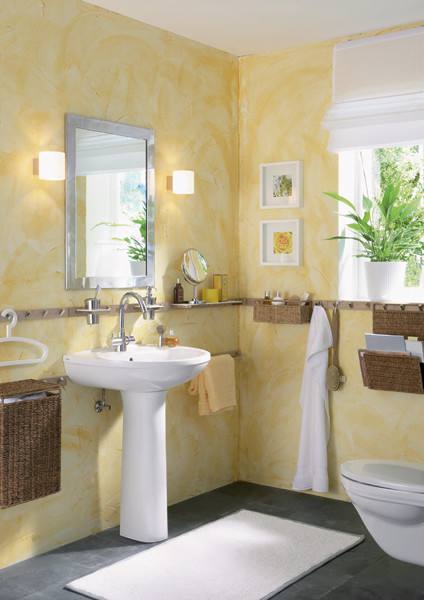 First of all, let's talk about the manipulations thatare associated with the application of coatings designed to imitate the texture of marble (Lingotto Platinum by Fractalis; Palladio by Corev), fabric (Kreos by Oikos), to create the effect of crumbling (Vizconde by IrisDeco), cracked (Craquelatto by Corew) or aged walls (Fortress by MaxMaster). At the same time, our description is of a general nature, so it cannot be used as a guide to action. What can you do, experts reliably guard their secrets. Be that as it may, the technology of applying a multi-layer decorative coating has nothing in common with conventional painting work. Except that in both cases equally high demands are placed on the quality of the surface. It is leveled, sanded, cleaned. The closest attention is paid to the priming of the substrate. For this purpose, both primers and primer-paints are applied layer by layer. Their purpose is to maximally strengthen the base, reduce its absorption capacity and increase the adhesion (bond) of the future coating to the substrate.
First of all, let's talk about the manipulations thatare associated with the application of coatings designed to imitate the texture of marble (Lingotto Platinum by Fractalis; Palladio by Corev), fabric (Kreos by Oikos), to create the effect of crumbling (Vizconde by IrisDeco), cracked (Craquelatto by Corew) or aged walls (Fortress by MaxMaster). At the same time, our description is of a general nature, so it cannot be used as a guide to action. What can you do, experts reliably guard their secrets. Be that as it may, the technology of applying a multi-layer decorative coating has nothing in common with conventional painting work. Except that in both cases equally high demands are placed on the quality of the surface. It is leveled, sanded, cleaned. The closest attention is paid to the priming of the substrate. For this purpose, both primers and primer-paints are applied layer by layer. Their purpose is to maximally strengthen the base, reduce its absorption capacity and increase the adhesion (bond) of the future coating to the substrate.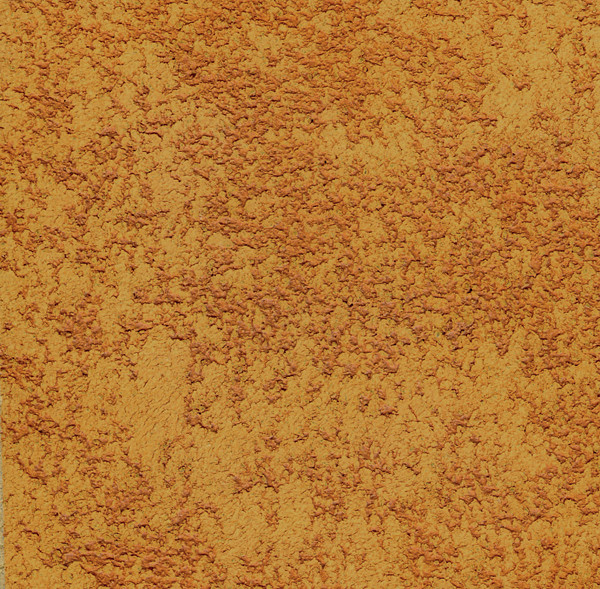
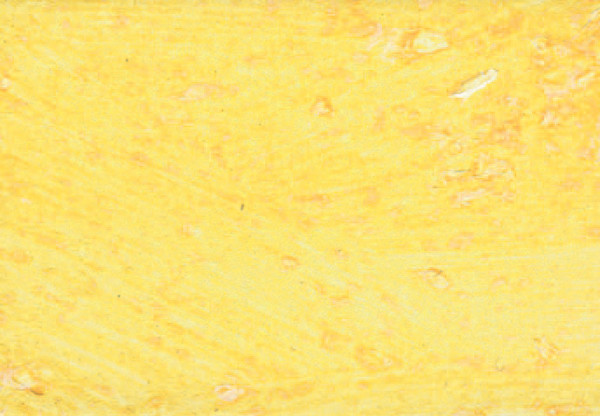
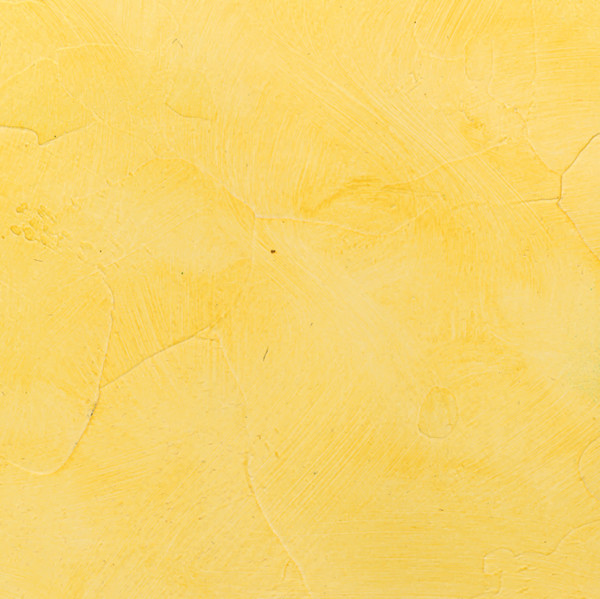
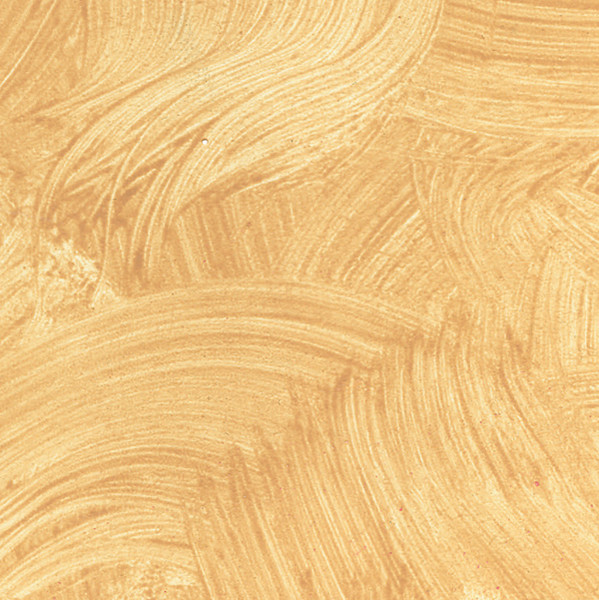
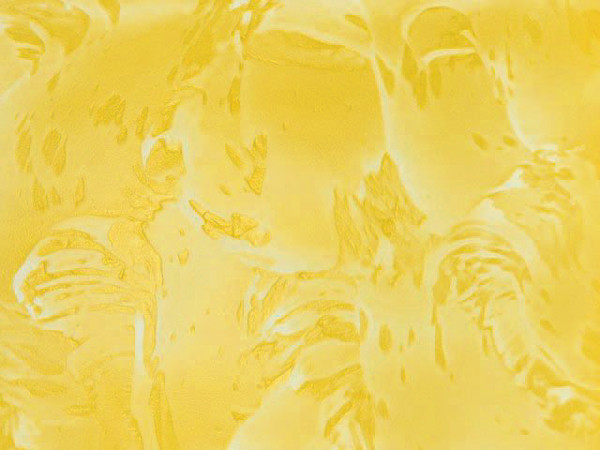
- Photo 1. Decorative coating Pitted (Armourcoat), color L4040 W 3098. From 1080 rub./m2.
- Photo 2. Decorative coating Antiquas (IrisDeco), color AD3093 (200 g) From 250 rub./m2.
- Photo 3. Decorative coating "Old walls" (MaxMaster), tinting according to the "MaxDecor" catalogue in colour I 089. From 210 rub./m2.
- Photo 4. Decorative paint Duca di Venezia (Oikos), color A452. From 194 rub./m2.
- Photo 5. Decorative relief coating "Henditex" (Terraco); decorative coating "Fresco" (Terraco), color 3020. From 108 rubles/m2.
But all these are preparatory measures.The main thing in working with decorative compositions is to create visual volume, depth and a reliable pattern. This is achieved, for example, by chaotic non-parallel strokes (the so-called petal technique), which are applied with a special tool (first a wide, then a narrow steel spatula or trowel), and multi-layered coating. If the work is done well, the layers will "show through" each other and form an intricate pattern. It is not at all necessary to use material of one color. Often, several shades are used: first the darkest one goes, then those that are lighter. Veins imitating the pattern of the stone are formed due to the first layer or are drawn on. Each layer must be polished (smoothed) with a spatula or trowel blade. This operation is abandoned only if the coating should be matte or pearlescent. The finishing stage is applying a protective layer of special wax. It happens that the necessary substances are already included in the composition of the plaster, then this stage is omitted. If we talk about decorative paints, for example, Aquarel Texture (Corev), Polaris Pearl (Fractalis), Granada la Pintura Anticada (Oikos), Millicolor (Valpaint), L'aurore boréale (MaxMaster), then working with them is structured differently. First, one or two layers of primer follow. The number of layers and the name of the composition will be suggested by the seller. Thus, Oikos representatives recommend first using the Neofix primer of their brand, and then the Fondo Murales composition. At the same time, Fractalis sellers allow the use of Aqua Marina matte acrylic paint (Symphony brand) as a primer, and Max AD Master specialists suggest using a special moisture-proof primer-paint La Base. Then comes the direct application of paint. Either certain tools or a combination of them are used. When hitting the surface, the pigment droplets break up and stick to the substrate. A protective layer is usually not needed. Completely different technologies are typical for working with flock materials. The choice of method depends on whether a single- or multi-component composition is used. In the first case, the dry material is simply diluted with water, after which it is applied to the walls using a spatula or trowel. In the second case, the manipulations are more complicated. First, an acrylic base - glue - is applied to the walls using a roller with medium-length pile, then flock is applied using a special sprayer. In both cases, a layer of protective varnish completes the work.
Know and be able to
Diliged under primerповерхности как к обязательному, но совершенно непонятному этапу работы. Поскольку речь идет о нанесении дорогостоящего декоративного покрытия, то грунтование представляет собой целую систему мероприятий, обеспечивающих качество и долговечность отделочного слоя. Последовательно могут наноситься два-три состава. Если грунт подобран правильно, удастся снизить впитывающую способность основания, возможно, уменьшить расход и продлить срок службы декоративного материала. Дешевые составы лучше не приобретать. По сравнению с расходами на декоративное покрытие и его нанесение стоимость грунтов даже самой уважаемой марки будет почти незаметной.После долгого и трудного поиска покрытие выбрано и приобретено. Теперь дело за малым – найти мастера. В принципе, нанесение можно доверить той бригаде, что уже занимается отделкой квартиры или дома. Однако универсальные специалисты, возможно, отлично окрашивают валиком стены, но с декоративной штукатуркой знакомы мало. Стоит ли оплачивать совершенствование их навыков? Лучше попросить совета у фирмы, продавшей декоративный состав. Продавец может не располагать собственной командой, но надежных специалистов обязательно порекомендует. Правда, тут тоже есть несколько условий. Желательно, чтобы найденный отделочник знал о материале не понаслышке, а неоднократно использовал его в работе. Если это не так, отправьте его на один из открытых мастер-классов, которые проводятся некоторыми компаниями.В противовес мнению, что сапожник должен тачать сапоги, а пирожник – печь пироги, эти фирмы не видят ничего предосудительного в том, чтобы на нанесение декоративного покрытия решился даже сам клиент. Потому каждый может приобрести в компании некоторое количество штукатурки, посетить подобное мероприятие и за пять-шесть часов освоить премудрости обращения с материалом. Не можем не согласиться, полученные навыки действительно позволят сэкономить – стоимость профессионального нанесения декоративного покрытия составляет в среднем 700 руб./м². Однако в общей стоимости ремонта и отделочных работ эти затраты – капля в море. Так что будет намного лучше, если с доселе неизвестным составом близко «познакомится» не хозяин, а мастер. Быстро (15–20 м² за смену) создавать поверхность с заданной фактурой сможет только опытный человек.Если планируется нанесение сложного многослойного покрытия, скажем, под мрамор, рекомендуем посмотреть на работу мастера – готовый интерьер – «живьем». Если объекты недоступны, должна последовать просьба об изготовлении выкраса. Только так можно познакомиться с почерком мастера и при необходимости его подкорректировать. Ведь, как мы уже говорили, один и тот же материал способен выглядеть по-разному. Это зависит от того, каким инструментом выполнялась работа, а также от величины и силы штриха. Рисунок создается в результате постоянного изменения положения руки и с помощью различных инструментов. Простая техника осваивается быстро, по-настоящему художественная работа требует постоянного совершенствования. Редакция благодарит компании A decor, Terraco, «Ирисдеко», «Максдекор» и декор-центр Oikos за помощь в подготовке материала.





